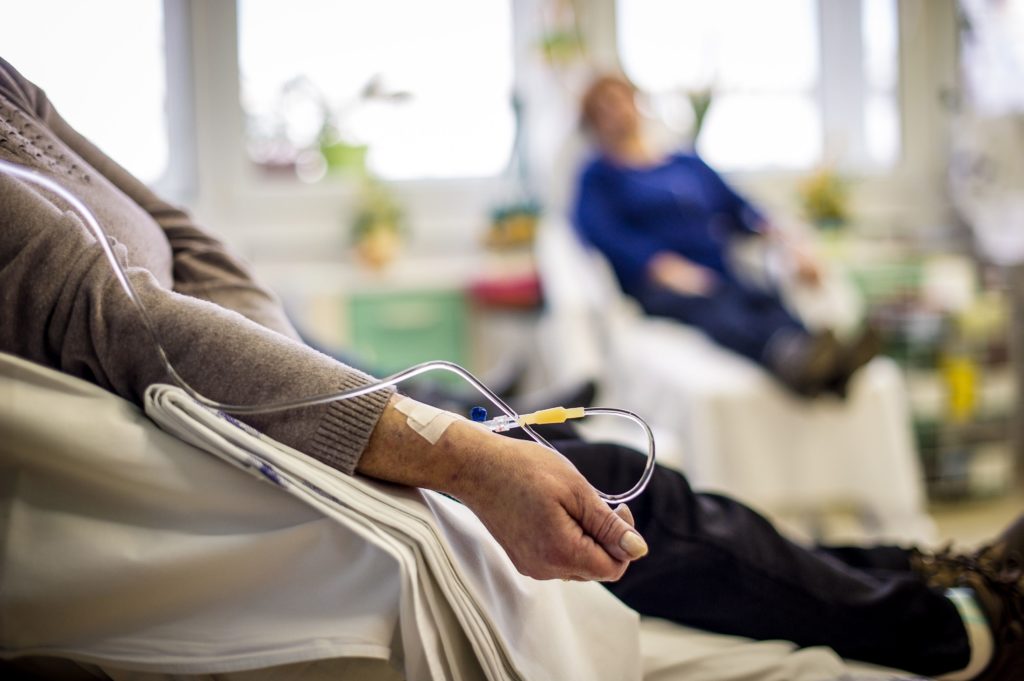
Diagnosed with Cancer? Your two greatest challenges are understanding cancer and understanding possible side effects from chemo and radiation. Knowledge is Power!
Learn about conventional, complementary, and integrative therapies.
Dealing with treatment side effects? Learn about evidence-based therapies to alleviate your symptoms.
Click the orange button to the right to learn more.
- You are here:
- Home »
- Blog »
- side effects ID and prevention »
- Natural Anti-Aging Therapies
Natural Anti-Aging Therapies

I begin all post about anti-aging therapies by explaining that I am a cancer survivor who has undergone aggressive chemotherapy and radiation.
My goal is to reduce my risk of cancer relapse, reduce my risk of a secondary cancer and recover the years I lost, the years I aged due, not to time, but to aggressive chemotherapy and radiation.
The youthful looking ship sailed long ago. Looking young is no longer my main concern.
The term “anti-aging” has taken on a negative, con man, sort of tone these days. To cancer survivors, anti-aging should be a complementary therapy the way that moderate exercise or the Mediterranean Diet is therapy.
While researching the issue of aging, senescence, DNA damage, etc. resulting from chemotherapy and radiation, I’ve discovered that, by venturing into the evidence-based but non-conventional therapies world, I’ve discovered that most, if not all therapies overlap.

beauty concept skin aging. anti-aging procedures, rejuvenation, lifting, tightening of facial skin, restoration of youthful skin anti-wrinkle
That is to say that chemo causes aging which reduces bone mineral density. So I exercise to slow aging but also to detox and build bone strength. And support my chemotherapy-induced cardiomyopathy with evidence-based non-conventional therapies to support my heart health as well. And I help my chemotherapy-induced cognitive dysfunction aka chemobrain with evidence-based non-conventional therapies as well.
My point is that a host of therapies reduce inflammation and therefore are anti-aging. Therapies such as:
- Nutrition
- Exercise
- Nutritional Supplementation
- Whole-body hyperthermia
- Sleep
Further, the studies linked and excerpted below talk about nutritional supplementation that is anti-inflammatory and anti-aging as well.
Are you a cancer survivor who has undergone chemotherapy and/or radiation? If you’d like to learn more about anti-inflammatory, anti-aging therapies, scroll down the page, post a question or comment and I will reply to you ASAP.
Thank you,
David Emerson
- Cancer Survivor
- Cancer Coach
- Director PeopleBeatingCancer
A Long-Term Myeloma Survivor: I Wish I Knew Then What I Know Now
Scientific Advances and Dietary Measures to Slow Down Aging
“Spectacular progress is being made in slowing down aging, with three new molecular indicators of measurable and manageable processes that accelerate or slow down deterioration associated with age, as well as age-related pathologies…
A barometer of interest in the topic is that approximately 300,000 articles on aging have been published since 2013, which is as many as were published during the previous century…
Emerging senolytic agents derived from natural products
“Cellular senescence is a hallmark of aging, it is a permanent state of cell cycle arrest induced by cellular stresses. During the aging process, senescent cells (SCs) increasingly accumulate in tissues, causing a loss of tissue-repair capacity because of cell cycle arrest in progenitor cells and produce proinflammatory and matrix-degrading molecules which are known as the senescence-associated secretory phenotype (SASP), and thereby contribute to the development of various age-related diseases.
Genetic evidence has demonstrated that clearance of SCs can delay aging and extend healthspan. Senolytics, small molecules that can selectively kill SCs, have been developed to treat various age-related diseases.
In recent years, emerging natural compounds have been discovered to be effective senolytic agents, such as
- quercetin,
- fisetin,
- piperlongumine
- and the curcumin analog.
Some of the compounds have been validated in animal models and have great potential to be pushed to clinical applications. In this review, we will discuss cellular senescence and its potential as a target for treating age-related diseases, and summarize the known natural compounds as senolytic agents and their applications.
Mechanisms of aging and potential role of selected polyphenols in extending healthspan
“Aging became a priority in medicine due to the rapid increase of elderly population and age-related diseases in the Western countries. Nine hallmarks have been identified based on their alteration during aging and their capacity to increase longevity.
The pathways and the molecular mechanisms to improve lifespan and healthspan are controlled by behavioral, pharmacologic and dietary factors, which remain largely unknown. Among them, naturally occurring compounds, such as polyphenols, are considered potential antiaging agents, because of their ability to modulate some of the evolutionarily conserved hallmarks of aging, including
- oxidative damage,
- inflammation,
- cell senescence,
- and autophagy.
Initially, these compounds gained researchers’ attention due to their ability to extend the lifespan of simple model organisms. More recently, some of them have been proposed as senolytic agents to protect against age-related disorders, such as cancer, cardiovascular and neurodegenerative diseases.
The intent of this review is to present the most validated molecular mechanisms regulating ageing and longevity and critically analyze how selected polyphenols, namely
- resveratrol,
- quercetin,
- curcumin
- and catechins,
can interfere with these mechanisms.
Flavonoids in Skin Senescence Prevention and Treatment
“Skin aging is associated with the accumulation of senescent cells and is related to many pathological changes, including decreased protection against pathogens, increased susceptibility to irritation, delayed wound healing, and increased cancer susceptibility.
Senescent cells secrete a specific set of pro-inflammatory mediators, referred to as a senescence-associated secretory phenotype (SASP), which can cause profound changes in tissue structure and function.
Thus, drugs that selectively eliminate senescent cells (senolytics) or neutralize SASP (senostatics) represent an attractive therapeutic strategy for age-associated skin deterioration.
There is growing evidence that plant-derived compounds (flavonoids) can slow down or even prevent aging-associated deterioration of skin appearance and function by targeting cellular pathways crucial for regulating cellular senescence and SASP. This review summarizes the senostatic and senolytic potential of flavonoids in the context of preventing skin aging.”
Senolytics and Senostatics: A Two-Pronged Approach to Target Cellular Senescence for Delaying Aging and Age-Related Diseases
“Aging is the most important single risk factor for many chronic diseases such as cancer, metabolic syndrome, and neurodegenerative disorders. Targeting aging itself might, therefore, be a better strategy than targeting each chronic disease individually for enhancing human health.
Although much should be achieved for completely understanding the biological basis of aging, cellular senescence is now believed to mainly contribute to organismal aging via two independent, yet not mutually exclusive mechanisms:
- on the one hand, senescence of stem cells leads to exhaustion of stem cells and thus decreases tissue regeneration.
- On the other hand, senescent cells secrete many proinflammatory cytokines, chemokines, growth factors, and proteases, collectively termed as the senescence-associated secretory phenotype (SASP), which causes chronic inflammation and tissue dysfunction.
Much effort has been recently made to therapeutically target detrimental effects of cellular senescence including selectively eliminating senescent cells (senolytics) and modulating a proinflammatory senescent secretome (senostatics).
Here, we discuss current progress and limitations in understanding molecular mechanisms of senolytics and senostatics and therapeutic strategies for applying them. Furthermore, we propose how these novel interventions for aging treatment could be improved, based on lessons learned from cancer treatment.”

